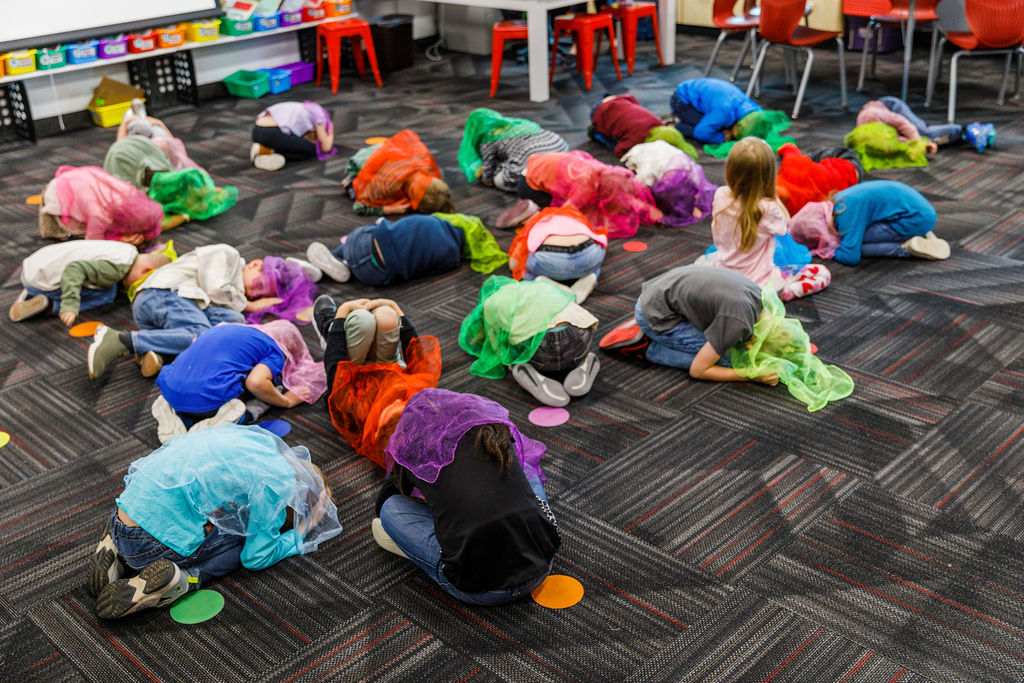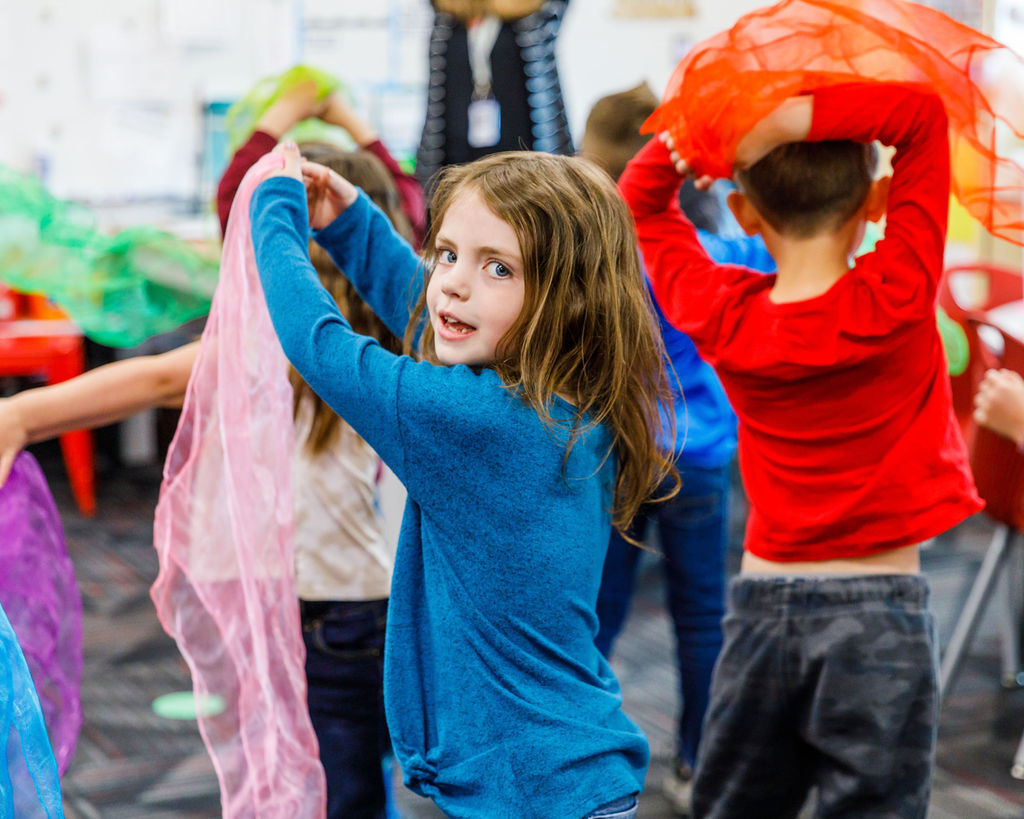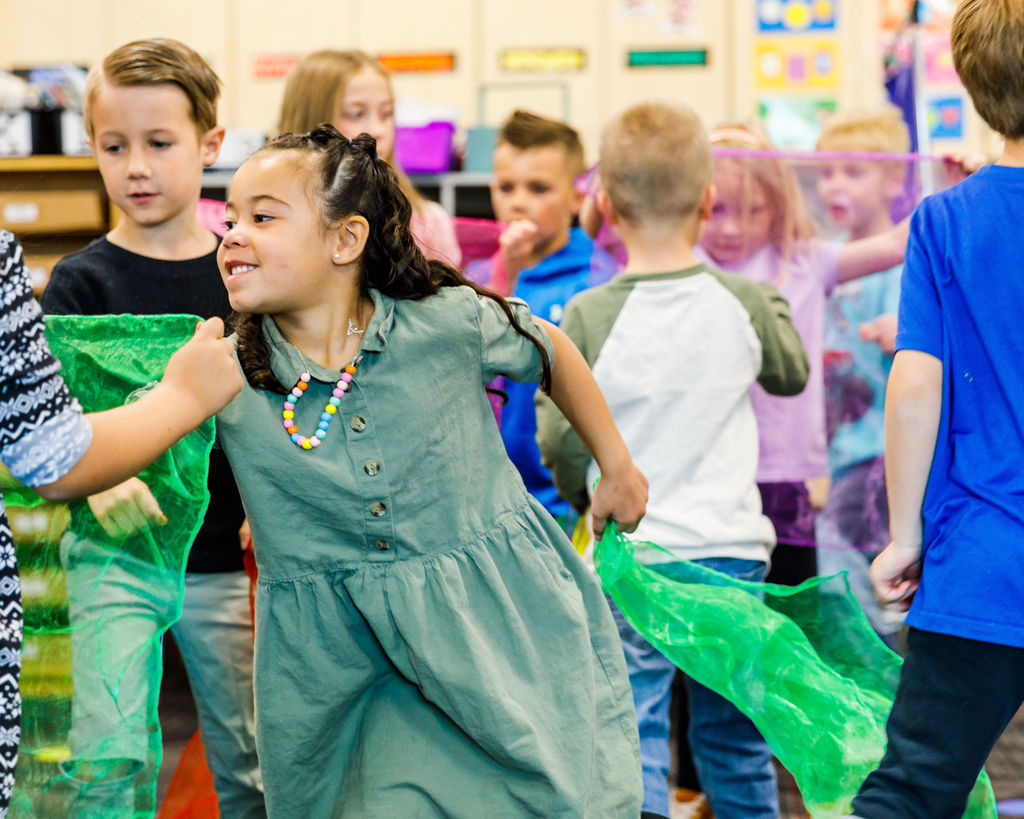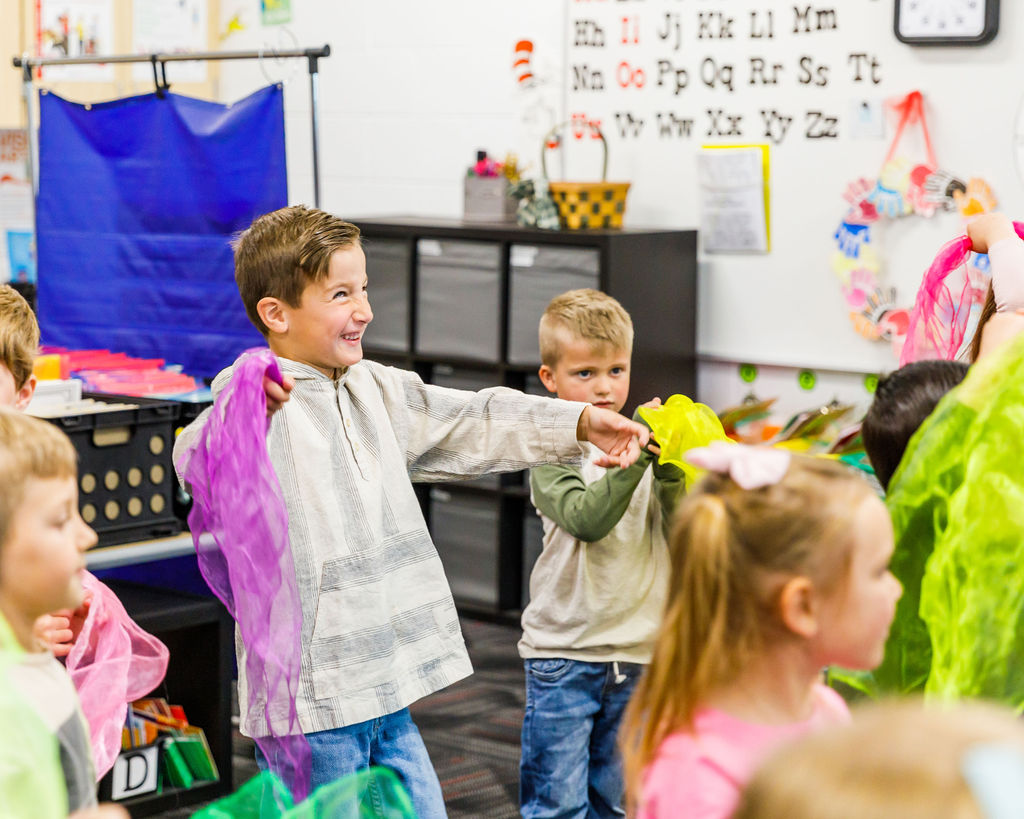Performing the Plant Life Cycle: A Teacher’s Story of Deep Learning in Kindergarten

Silver Lake Elementary School second-grader dances the plant life cycle.
The Plant Life Cycle Performance
I recently visited Jennifer Cherry’s Kindergarten class at Silver Lake Elementary school in Eagle Mountain to document her students' learning and her work integrating the arts into her classroom. Watching her interact with the students and watching them perform the plant life cycle through movement and music was a joyful experience.
The students were so excited to perform. Their parents knew we were coming to photograph—their hair was handsome and sharp, prepped just for the camera. The performance occurred in four movements.
Movement One - Sprouting of the Seeds
The sprouting of a seed was performed to Edvard Greig’s Peer Gynt, op. 23 Morning Mood.
The students curled up on the floor underneath colorful scarves and began to sprout roots by wiggling and wriggling their fingers, arms, and legs away from their body.

Movement Two - The Parts of a Flower
The students expressed the parts of a flower by singing and performing actions to Dr. Jean’s “Part of a Flower” song. A fun variation of “Head, Shoulders, Knees, and Toes.”

Movement Three - Pollination
Pollination occurred as half the students began to buzz around the room with quick feet and little stingers that pollinated the colorful scarves held by the other half of the class. This movement was appropriately performed to Rimsky-Korsakov's Flight of the Bumblebee.

Movement Four - Scattering of the Seeds
The scattering of the seeds was the perfect ending. Peer Gynt played again and the students moved through the space with their scarves, blowing seeds through the wind.

Performance in the Classroom is a Celebration of Learning
Before, during, and after the performance the room beamed with pride! A deep sense of accomplishment and understanding exuded from the students, myself, our photographer, and Ms. Cherry’s assistant. The exuberant evidence of transformative learning and the joy in the room felt undeniable. Above all this, though, Ms. Cherry’s pride and creative process are my focus here.
Ms. Cherry told me, “The performance today is one I am really proud of. I created it last year; this is my second year doing it.” In an educational climate as stressful as ours, it felt like a breath of fresh air to hear a teacher share something that was bringing them incredible joy and satisfaction. And to make her words even more exciting? That the arts are creating those experiences.
As Ms. Cherry shared the details of her momentum toward this moment of performance and celebration, I considered the many other teachers I know who are feeling frustrated and burned out. Her process is inspiring to all educators: taking ownership of her professional learning, creatively adapting other artists ideas to meet the needs of her classroom, leveraging self-reflection and data analysis to improve her practice, and synthesizing her professional development experiences in the arts over several years through repetition and practice in order to create deep learning experiences for her students are critical elements of her learning. The confidence and self-efficacy her words exude inspired me—and I hope they inspire you, too.
Ms. Cherry's Creative Journey
“I need to tell you, this performance is a Jenn Cherry original, but a lot of it was inspired by things that I had seen over the years at Arts Express.
I love going to classes taught by Miriam Bowen. I went one year and she was explaining how she created a dance for her kids and they were seeds and she taught them a dance that represented the life cycle of a plant. She had purchased brown fabric and each kid would start as a seed under their fabric. I thought and thought about how I could replicate that idea. I know the scarves are NOT that big, but that is what I have and it works.
One year I was at Arts Express, I was sitting in a class and after about 20 minutes I was like, “NOPE, this class is not for me.” It was for older elementary kids and how to use technology with them. I think I was just in my first or second year of teaching and I had no idea what the lady was talking about. I wasn't familiar with any of the programs she was talking about and I knew it just wasn't a lesson that would help me with my kindergarten kiddos. I grabbed my stuff and walked out into the halls. It was towards the end of the 2nd day and I was just tired. I heard music coming from somewhere so I followed the sound. I ended up in the gym so it was easy just to sneak in the back. The presenter was playing Rimsky-Korsakov's “Flight of the Bumblebee.” Half the people were holding silk flowers and the other half were bumblebees flying around pollinating the flowers. IT WAS BRILLIANT! I only saw the second half hour of this lesson, I don't even know the presenter’s name, but it changed my life. I am forever grateful I wandered into his class!
Seeing those ideas from Arts Express (and seeing a few other things from my coworkers over the years like the parts of the flower song by Dr. Jean) and having the ideas swirl around in my head over the years—that is how I created our four movement performance.”
Performance is Evidence of Deep Learning
Performance in the classroom can be performance with a small p or a big p. Small p performance is the informal performance of a work in progress. When students are making their way through the learning process, teachers can ask them to show, demonstrate, or perform to assess how far the students have come and where support is still needed. Big p performance is the formal performance: the end result of lots of time, effort, practice, and refining of a skill or knowledge set. The big p performance is not intended to check on the students progress, but instead celebrates the knowledge and skills obtained by the students. There is no expectation of critique or revision following a big p performance— just applause, photos, hugs, and thank you's.
Ms. Cherry’s class performed a big p. Proud. Prominent. Palatable. Profound. Picturesque. Proper. Proto-professional. Proprietary. Polite. Polished. Truly performance with a big p! It was easy to celebrate their undeniable learning. The conversation and discussion that began the event and followed it were evidence to all that these students were performing knowledge and skills they had practiced many times over.
Ms. Cherry reported on her intention for this performance to help her students with their big p performance on end-of-year testing:
“This dance was created to help deepen my students' understanding of the plant life cycle. During their end of year writing assessment my students listen to a story about a tree. In their writing they list the main idea and three details from the story. Last year, I couldn't believe how well my students did with their writing response. They labeled the parts of the tree so beautifully in their drawings and almost all of them included the roots of the tree. I sincerely think it was because of this dance. They love the first part of the song when they sprout their roots.”
Given the fast pace and assigned structures of our school day, it’s difficult to find time for big p performances, but isn’t that what we are expecting from our students at the end of the year? That they can give a BIG P performance on a BIG P test? Maybe we would find more confidence, reduced test anxiety, and reason for celebration if we made time—like Ms. Cherry—for more big p performing arts experiences in our classroom. I know those are the moments I remember most from my days in school.

Heather Francis is the Research and Development Coordinator for the BYU ARTS Partnership, holds an MA in Teaching Artistry and is earning a PhD in Instructional Psychology and Technology from BYU. She is a dance teaching artist, math educator, and serves on the national board for the USA chapter of dance and the Child international (daCi). www.daCiUSA.org
Last thing: to prep my kids to learn the dance, here are two YouTube clips I always use:







